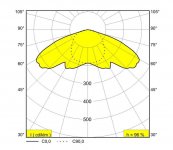Hey Spurr i allmost took you serious.
Untill your last post.
I'm sorry you don't like the facts I posted. But it's quite obvious Whazzup lacks the understanding I (and others like Knna) have.
I would suggest you read what I wrote with an open mind, because from your first post it's quite obvious you think this Gavita-Pro luminaire is the best, which just isn't factual.
If Gavita-Pro was the best I would be first in line to use it. I am unbiased and only want the best. But I won't accept BS claims and incorrect data, etc., as proof of what is best.
FWIW, Whazzup admitted he works for Gavita, thus he's very biased and cannot be trusted at face value. I work for no one, I am a scientist and academic, thus my word can be trusted much more than his. Also, because I am the only one posting provable data, and Whazzup is not, my word can be trusted more than his.







